For steep slopes and property edges that require stabilization or screening, consider planting gray dogwood (
Cornus racemosa). This native shrub tolerates dry, well-drained soil and partial shade. The suckering shrub forms an effective hedge and works when planted in masses on a hillside or at the edge of your property. As a bonus, you’ll provide pollinators with pollen and nectar, and birds with tasty caterpillars in summer and berries in the fall and winter.
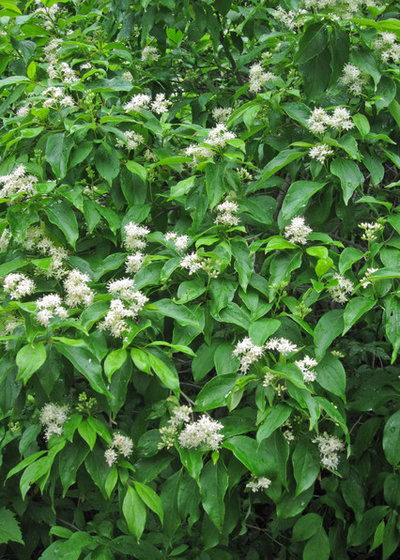
Holm Design & Consulting LLC
Botanical name: Cornus racemosa Common name: Gray dogwood
Origin: Gray dogwood is native to eastern North America from the eastern Dakotas southward to Texas, and eastward to Maine in the north and Florida in the south; in Canada, it’s native to Ontario and Quebec
Where it will grow: Hardy to minus 45 degrees Fahrenheit, or minus 43 degrees Celsius (USDA zones 2b to 9a; find your zone)
Typical plant communities: Medium to dry sites with well-drained soil
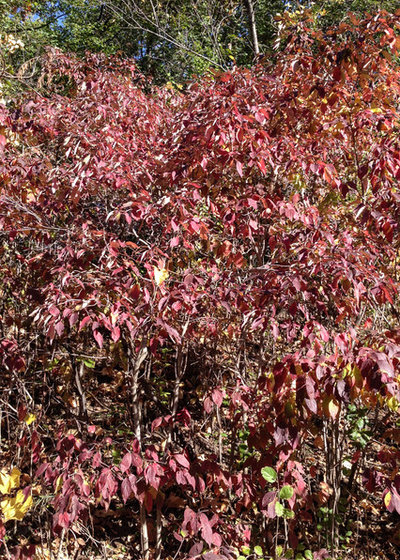
Holm Design & Consulting LLC
Soil requirement: Sandy loam to loamy-clay
Light requirement: Full or partial sun
Mature size: 8 to 14 feet tall and 4 feet wide
Benefits and tolerances: Tolerates dry sites, steep hillsides and tough urban sites
Seasonal interest: Clusters of cream flowers open in early June; medium green foliage turns maroon or dark red in fall; clusters of white berries develop in August and persist after the leaves have fallen, providing winter interest
When to plant: Spring or fall; potted plants are available from most native plant nurseries in regions where this shrub grows
Shown: Typical fall color
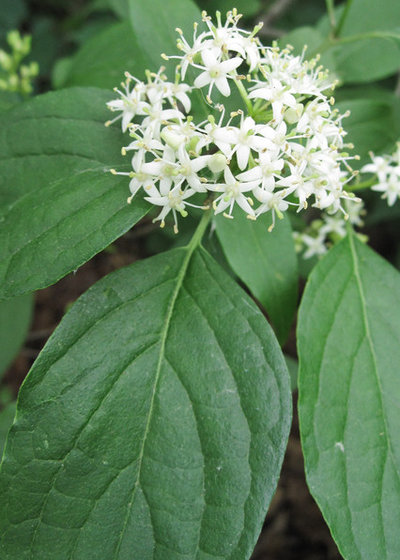
Holm Design & Consulting LLC
Distinguishing traits. Gray dogwood is clonal and will spread from the parent plant outward, forming new genetically identical plants around the parent. This native shrub has an upright, dense form.
How to use it. Because of gray dogwood’s clonal, suckering habit, you need enough space for it to colonize an area. A small city landscape under a quarter-acre in size probably wouldn’t be suitable for this spreading shrub; it’s best in larger gardens in suburban or rural landscapes. It can be used to create a dense hedge for screening, massed on a steep hillside to help stabilize a slope, in the understory of a woodland edge to provide screening, or planted in a cluster to create a nesting thicket for birds. Don’t use this it as a single specimen in a shrub border.
Shown: Close-up of the flowers
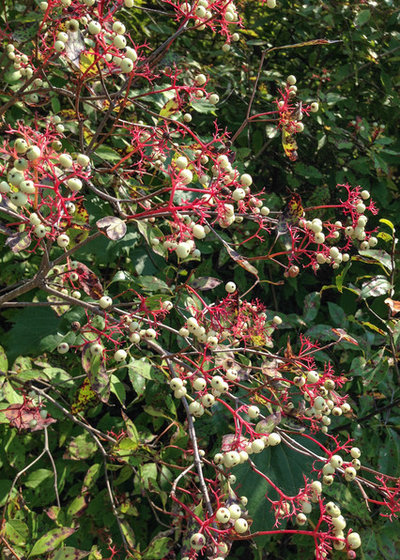
Holm Design & Consulting LLC
Planting notes. Plant gray dogwood in a cluster of at least three to five plants spaced 4 feet apart.
Use tighter spacing (2½ to 3 feet) for a hedge, but if you’re planting a large area, you can use fewer plants spaced farther apart than recommended and allow the plants to fill in over time. The flowers have a musky odor — an unpleasant smell to some — so you may want to consider this if you’re putting the plant near a patio or deck.
Shown: A planting under a large tree along a retaining wall

Holm Design & Consulting LLC
Pollinator notes. Like all dogwoods, this shrub has a four-parted flower consisting of four creamy-white petals. The flowers produce both pollen and nectar, and attract a number of native bees, beetles and, occasionally, flies.
Shown: Female mining bees (
Andrena spp.) are common visitors of gray dogwood flowers.
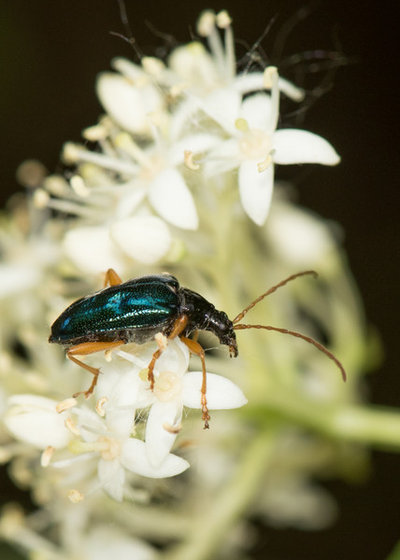
Holm Design & Consulting LLC
Shown: Long-horned beetle





